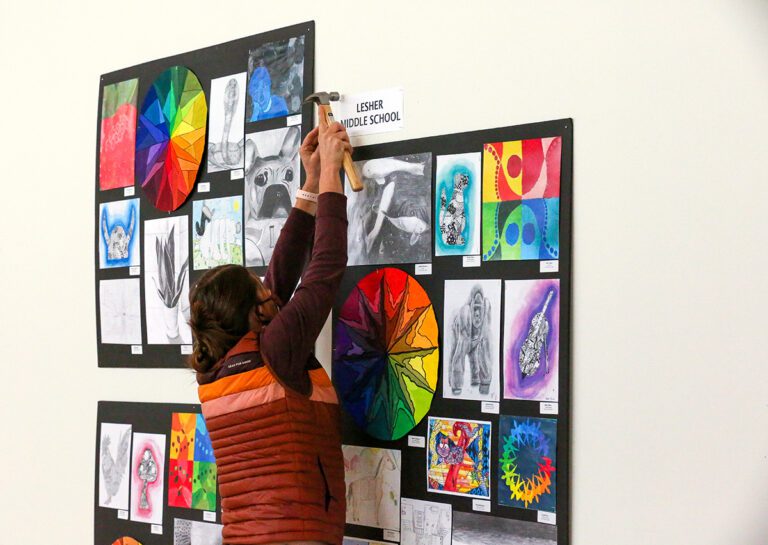Staying connected with our students once they leave our class is difficult enough. Staying connected after they graduate high school is nearly impossible. However, one high school art teacher has managed to stay connected and follow her students through their career paths. She meets with them once a year for an alumni reunion exhibition.
Six years ago, Leatha Koefler, former Sculpture & Ceramics and Art Four teacher at Apex High School had a vision of an art exhibit where her advanced students would hang their art alongside the work of alumni. Her previous students had graduated college and were working in many different fields from industrial design, architecture and fashion to the world of fine art, jewelry making and pottery. She met with the director of the local culture arts center and the idea of the Reunion Show was realized.
I recently caught up with Leatha Koefler and asked her if she would mind answering a few questions about the show. Here are her responses.
What made you decide to start a reunion show?
Teachers sincerely care about their students, but they typically disappear from our lives after graduation. When a graduating senior asked if they could participate again, I saw the opportunity to stay in contact and see how they progressed after high school. It is so enjoyable to see our former students become happy, successful adults.
When did you first decide to start gathering names?
I arranged the show to introduce graduating students to the way a professional show is organized and entered. It was the first time they had to deal with a contract and follow gallery guidelines for preparing and delivering their work. The process became part of their final exam. During the second year of the show, seniors asked if they could participate in the show again the following year. That is when I began gathering names, emails and changed the theme of the show to include alumni. It has become a traditional rite of passage.
How did you locate past students and gather their info?
I located most former students on Facebook. I asked them to send my email address and show information to any other former students that were still making art.
How do you keep track of all the contact info?
I have an email group and an Excel worksheet with pertinent information.
What has been the hardest part about organizing the event?
Staying current with email addresses and married name changes has been the hardest part of organizing the event. College students lose their college emails upon graduation and they are so busy with graduation they forget to notify contacts. This is where Facebook and Twitter help. It is also difficult for some alumni to participate due to distance. We have a former foreign exchange student who is teaching painting in Europe and other alumni who have moved all over the country. That issue was solved by using a digital display of work.
Any other info you think would be relevant that I haven’t covered?
I believe most teachers would be surprised to learn how many of their former art students are still making art or are designers. It is also useful for current students and their parents to see the art careers former students have chosen. The myth of the starving artist is dispelled. The show also provides an opportunity for networking. In the future, I would like to include a group art project and a more organized networking forum.
The 2014 Reunion Show is running this month, June 6th through July 11 at the Halle Cultural Arts Center in downtown Apex, NC.
Leatha Koefler is a working artists who regularly displays in the Raleigh, NC area. you can learn more about Leatha and view her work on her website. http://www.leathakoefler.com
Would you ever consider organizing and hosting a high school reunion show?
Have you ever participated in a similar event?
Magazine articles and podcasts are opinions of professional education contributors and do not necessarily represent the position of the Art of Education University (AOEU) or its academic offerings. Contributors use terms in the way they are most often talked about in the scope of their educational experiences.







